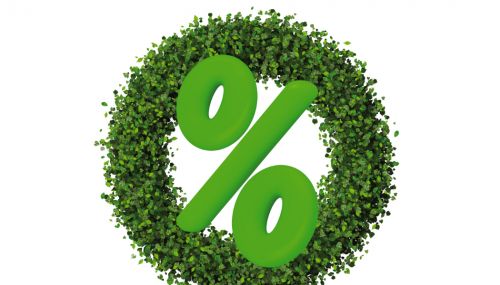All
How to Set Your Business Apart with Renewable Propane
by Bert Warner, Propane Energy & Research Council

Low emissions energy sources like renewable propane allow retailers to differentiate their business and attract forward-thinking customers.
Sustainability should continue to be an important consideration for the commercial energy sector, not only as an environmental goal but as a long-term business strategy. Engineers and specifiers that keep sustainability as a priority are better positioned to adapt to changing market expectations, can strengthen partnerships, and enhance resilience in their operations. At the same time, concerns about grid reliability and energy availability are growing across the country, so much that the DOE has warned that some U.S. regions could see 100 times more power outages annually by 2030. Together, these factors highlight the importance of exploring solutions that can reduce emissions while maintaining dependable performance.
Conventional propane already has lower emissions than coal, oil, gasoline and the average U.S. electric grid. Renewable propane combines the versatility and dependability of conventional propane with the added advantage of an even lower carbon profile.
Sustainable Energy For Tomorrow
Chemically identical to conventional propane, renewable propane offers the same reliability, availability, and performance propane has always delivered, but with the added benefit of significantly reduced emissions. The fuel is produced from renewable feedstocks such as camelina oil, vegetable oils, animal fats, and used cooking oil. With more than 4.5 million gallons produced annually in the United States, a figure that did not exist just a decade ago, the output has the potential to reach a billion gallons in the coming years.
The key advantage of renewable propane comes from its carbon intensity score — the carbon emitted for every unit of energy it produces. Depending on the feedstock, renewable propane’s score ranges from 20.5 to 43.5 grams of carbon dioxide equivalent per megajoule. By comparison, conventional propane scores about 79 to 80, diesel 100, gasoline 101, and the U.S. electric grid averages 130. Renewable propane made from camelina has a lower score than the electric grid in 49 states, and even other feedstocks beat the grid in 45 states. For retailers working with customers who are focused on sustainability, this data speaks volumes.
Energy that is Versatile Across Applications
Since renewable propane is interchangeable with conventional propane, its applications are just as versatile. Renewable propane can support backup power generation for critical facilities, power microgrids, heat homes and businesses, or fuel vehicles. Propane-powered equipment also tends to last longer than systems fueled by other sources, which reinforces its sustainability benefits. For example, a tankless propane water heater has a lifespan of 20 years compared with the 10- to 15-year lifespan of many electric storage models.
Renewable propane works seamlessly with propane infrastructure that is already in place. This means no costly upgrades or systems need to be installed. Instead, businesses can continue using the equipment they already know and trust. Retailers and their customers also have the luxury of introducing renewable propane at their own pace and can blend it with conventional propane, in any ratio, for a smooth transition. This flexibility ensures that adoption can happen gradually while still delivering immediate environmental benefits.
Much of the current renewable propane supply is being implemented in states with low carbon fuel standards, particularly in California, Washington, and Oregon. However, demand is beginning to grow on the East Coast as well. Cranmore Mountain Resort in North Conway, New Hampshire, recently became one of the first commercial facilities in the region to receive renewable propane with a delivery of 12,000 gallons. Cranmore blended the supply into a 30,000-gallon tank that now fuels heating, cooking appliances, and fireplaces for the resort’s new 60,000-square-foot lodge.
“I’m [even] making snow faster… but my electric bill hasn’t been ramping up,” says Ben Wilcox, president and general manager at Cranmore Mountain Resort. “If anything, sometimes the usage has reduced a bit.”
For Cranmore, renewable propane offered reduced emissions while ensuring reliable, efficient energy for its operations. This integration is a testament that could inspire more East Coast resorts and commercial facilities to follow suit.
A Business Opportunity for Retailers
We find that propane’s role in the energy diversification puzzle is often overlooked. Solar and wind can generate electricity, but they still heavily rely on a strained grid. Renewable propane provides a dispatchable, on-demand source of power that can stabilize microgrids, power backup systems, and even support electric vehicle charging. For all the attention electrification receives, data shows propane produces 32 percent fewer greenhouse gas emissions than the electricity generated from the average U.S. grid. With that, renewable propane is a practical way to cut emissions without disrupting operations or taking on significant new costs, especially if propane is already a part of one’s current operations. Renewable propane delivers added benefits, without any additional work.
One of the most cost-effective strategies to expand renewable propane’s presence in the market is through blending it with conventional propane. These renewable/conventional blends allow customers to gradually introduce renewable content without infrastructure changes. By incorporating blends, users can begin reducing their carbon footprint immediately, while the supply of the fuel continues to grow.
For retailers, renewable propane is more than an environmental talking point, it can also be used as a business opportunity. By educating and increasing awareness of the energy source, retailers can differentiate themselves as leaders in sustainable energy and build stronger relationships in the industry.
Renewable Propane Supports Market Growth
The industry is already prepared to meet the growing demand of renewable propane. The World LP Gas Association projects renewable propane could meet up to half of global propane demand by 2050. New feedstocks such as forestry byproducts, agricultural residues, and even landfill waste are being explored to expand production beyond fats, oils, and greases. Recent studies have also shown that renewable propane can be made by breaking down plastics, such as polyethylene and polypropylene, and by converting captured carbon dioxide into renewable propane.
As this supply grows, the existing infrastructure for storage, distribution, and delivery is ready to handle it. Unlike other energy transitions that require costly new pipelines, transmission lines, or equipment, renewable propane can scale quickly through systems that are already working and in place.
Propane has long been known for reliability, adaptability, and innovation, and renewable propane continues to build on to that foundation. Whether the conversation around decarbonization gets louder in the years ahead or not, renewable propane gives retailers and the industry the opportunity to lead in the clean energy transition, rather than react to it.
To learn more about renewable propane, visit propane.com/renewable-propane.
Bert Warner is the chief architect of the commercial portfolio at the Propane Education & Research Council, leading efforts to maximize propane awareness and gallon sales across diverse commercial markets. The Propane Education & Research Council is a nonprofit, operated and funded by the propane industry, that provides leading propane safety and training programs and invests in research and development of new propane-powered technologies. Bert can be reached at bert.warner@propane.com or (804) 802-0944.
Related Posts
 How to Set Your Business Apart with Renewable Propane
How to Set Your Business Apart with Renewable Propane
Posted on October 16, 2025
 EIA Report: Biodiesel and Renewable Diesel Imports Fall Sharply
EIA Report: Biodiesel and Renewable Diesel Imports Fall Sharply
Posted on October 16, 2025
 Northeast Liquid Fuel Providers Put Higher Bioblends in Focus
Northeast Liquid Fuel Providers Put Higher Bioblends in Focus
Posted on August 19, 2025
 Lower Carbon Lineup Puts Businesses on the Path to Net Zero Goals
Lower Carbon Lineup Puts Businesses on the Path to Net Zero Goals
Posted on August 18, 2025
Enter your email to receive important news and article updates.
